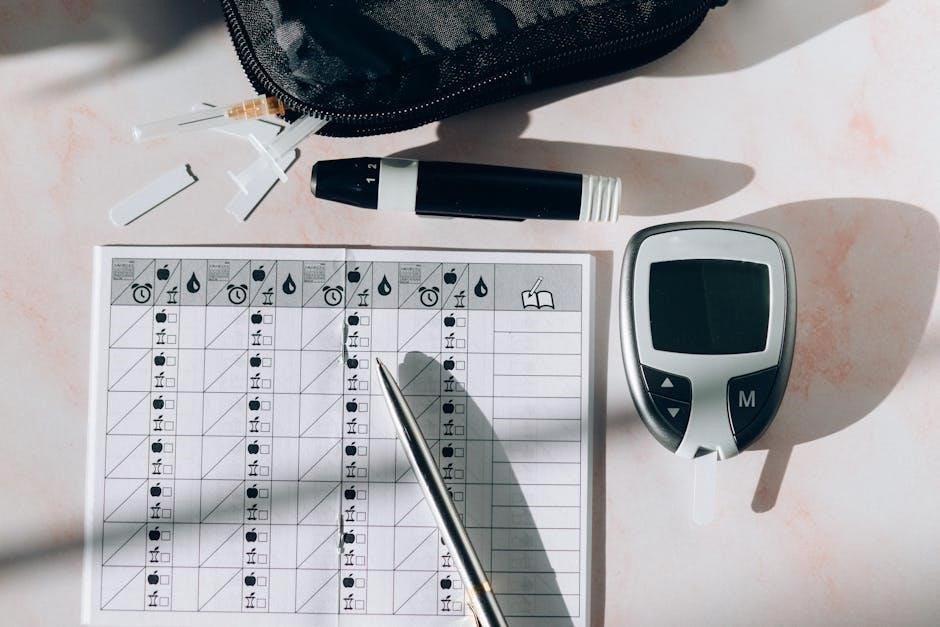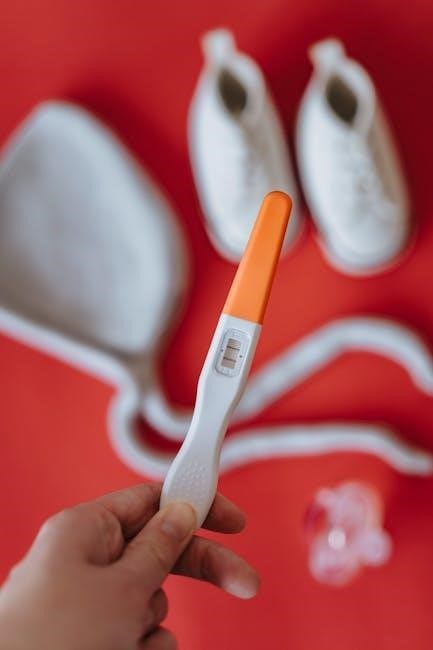HTH 6-Way Test Kit Instructions PDF: A Comprehensive Guide
Unbalanced pool water poses risks to swimmers, sanitizers, and pool structures. The HTH 6-Way Test Kit offers pool owners a method to measure key elements like chlorine, bromine, pH, alkalinity, hardness, and cyanuric acid. This guide provides comprehensive instructions for using the kit effectively.

The HTH 6-Way Test Kit is a comprehensive tool designed for pool owners to maintain balanced and healthy swimming pool water. This kit allows for the testing of six key parameters crucial for water quality: total chlorine, bromine, pH, total alkalinity, total hardness, and cyanuric acid (CYA), also known as stabilizer. Unlike simpler test kits that only measure a few parameters, the HTH 6-Way Test Kit provides a detailed analysis of your pool water’s chemical composition.
This test kit is compatible with all pool types, including both chlorine and saltwater systems, making it a versatile choice for any pool owner. The kit provides quick and accurate results, enabling users to make informed decisions about balancing their pool water. By regularly testing your pool water with the HTH 6-Way Test Kit, you can prevent issues such as skin and eye irritation, ineffective sanitization, and potential damage to pool surfaces and equipment.
Regular use of the HTH 6-Way Test Kit ensures that your pool water remains safe and enjoyable for swimmers, while also protecting your investment in your pool. With its easy-to-follow instructions, the HTH 6-Way Test Kit is a valuable asset for maintaining a pristine pool environment.
Why Test Your Pool Water?
Testing your pool water is essential for maintaining a safe, healthy, and enjoyable swimming environment. Unbalanced pool water can lead to a variety of problems that affect swimmers, pool equipment, and the overall cleanliness of your pool. Regular testing helps you identify and address these issues promptly, preventing costly repairs and health hazards.
One of the primary reasons to test your pool water is to ensure proper sanitation. Maintaining the correct levels of chlorine or bromine is crucial for killing harmful bacteria and algae. Imbalanced pH levels can reduce the effectiveness of these sanitizers, leaving your pool vulnerable to contamination. Additionally, incorrect alkalinity and calcium hardness can cause scaling or corrosion of pool surfaces and equipment.
Testing also helps prevent skin and eye irritation for swimmers. High or low pH levels can cause discomfort and health issues. By regularly monitoring and adjusting your pool water’s chemical balance, you can ensure a comfortable and safe swimming experience for everyone. Furthermore, testing for cyanuric acid (CYA) is important, as excessive levels can reduce the effectiveness of chlorine, while insufficient levels leave your pool unprotected from sunlight. Overall, regular testing allows you to maintain optimal water quality, ensuring a clean and inviting pool for all to enjoy.

Key Parameters Measured by the HTH 6-Way Test Kit
The HTH 6-Way Test Kit is designed to provide a comprehensive analysis of your pool water, measuring six key parameters that are crucial for maintaining a balanced and healthy swimming environment. These parameters include total chlorine, bromine, pH, total alkalinity, calcium hardness, and cyanuric acid (CYA). Each of these elements plays a vital role in ensuring the safety and cleanliness of your pool water.
Total chlorine and bromine levels indicate the amount of sanitizer present in the water to kill bacteria and algae. pH measures the acidity or alkalinity of the water, which affects the effectiveness of sanitizers and swimmer comfort. Total alkalinity helps stabilize the pH level, preventing drastic fluctuations. Calcium hardness refers to the amount of calcium in the water, which can cause scaling or corrosion if not properly balanced.
Cyanuric acid (CYA), also known as stabilizer, protects chlorine from being broken down by sunlight. Monitoring CYA levels is essential for maintaining consistent sanitation. By regularly testing these six parameters with the HTH 6-Way Test Kit, you can gain a complete understanding of your pool water chemistry and make informed adjustments to ensure a safe, clean, and enjoyable swimming experience for all.
Materials Included in the HTH 6-Way Test Kit
The HTH 6-Way Test Kit is a comprehensive package designed to equip pool owners with everything needed to perform accurate and reliable water tests. Inside the kit, you will find several essential components that work together to measure the key parameters of your pool water.
Typically, the kit includes a testing block or comparator, which features color-coded scales for each parameter being measured. This block is designed to hold water samples and allow for easy comparison with the provided color standards. Reagent solutions are also included, with each solution formulated to react with a specific chemical in the water, producing a color change that corresponds to the concentration level.
The kit will contain vials or bottles for collecting and mixing water samples with the reagent solutions. An instruction booklet or guide is also provided, offering step-by-step directions on how to perform each test and interpret the results. Some kits may also include a water collection bottle or syringe for obtaining accurate samples. Having all these materials readily available ensures a streamlined and efficient testing process, enabling pool owners to maintain optimal water balance with ease.
Step-by-Step Instructions for Using the HTH 6-Way Test Kit
To ensure accurate and reliable results when using the HTH 6-Way Test Kit, it is crucial to follow each step carefully. Start by collecting a water sample from about 18 inches below the surface of the pool, away from skimmers or return jets. Rinse the testing vials thoroughly before use to prevent contamination.
Next, fill each vial to the indicated mark with the pool water sample. Add the specified number of drops of each reagent solution to the corresponding vial, as instructed in the kit’s guide. Be sure to hold the reagent bottles vertically to ensure consistent drop size. After adding the reagents, gently mix the solution by inverting the vial several times.
Allow the solutions to develop for the recommended time, usually a few seconds or minutes, as indicated in the instructions. Then, compare the color of each solution to the color-coded scales on the testing block. Hold the vial against the color chart and find the closest match to determine the level of each parameter. Record your results and proceed to interpret them based on the ideal ranges provided in the guide.
Understanding Test Results: Ideal Ranges and Adjustments
Interpreting the results from your HTH 6-Way Test Kit is crucial for maintaining balanced pool water. Each parameter has an ideal range, and deviations indicate the need for adjustments. For instance, pH should ideally be between 7.2 and 7.6. If the pH is too low (acidic), add soda ash to increase it. If it’s too high (basic), add muriatic acid or sodium bisulfate to decrease it.
Total alkalinity should range from 80 to 120 ppm. Low alkalinity can cause pH instability, while high alkalinity can lead to scaling. Use alkalinity increaser (sodium bicarbonate) to raise alkalinity and muriatic acid to lower it. Calcium hardness should be between 200 and 400 ppm. Low calcium hardness can cause corrosion, while high levels can result in cloudy water and scaling. Calcium chloride can increase calcium hardness.
Maintain a free chlorine level of 1 to 3 ppm. If the level is low, add chlorine; if it’s high, reduce chlorination or use a chlorine neutralizer. Cyanuric acid (CYA) should be between 30 and 50 ppm for stabilized pools. High CYA can reduce chlorine effectiveness, requiring partial water replacement. Regularly monitor these parameters and make adjustments as needed to ensure a safe and enjoyable swimming environment.
Tips for Accurate Testing
To ensure accurate readings with your HTH 6-Way Test Kit, consider these tips; First, always collect your water sample from approximately 18 inches below the surface, away from skimmers and return jets. This ensures you get a representative sample of the pool water. Rinse the testing vials thoroughly before each test to remove any residue from previous tests that could skew results.
Read the test results under natural daylight, avoiding direct sunlight, which can distort the colors. Compare the colors immediately after adding the reagents, as colors may change over time. Ensure the reagents are fresh and not expired, as expired reagents can yield inaccurate results. Gently swirl the sample after adding reagents to ensure proper mixing, but avoid vigorous shaking, which can introduce air bubbles.
Keep the test kit stored in a cool, dark, and dry place to maintain the integrity of the reagents. Avoid cross-contamination by using separate vials for each test. By following these tips, you can increase the reliability of your HTH 6-Way Test Kit and make informed decisions about your pool water chemistry.
Troubleshooting Common Issues
Even with careful use, you might encounter issues with the HTH 6-Way Test Kit. One common problem is difficulty matching colors. Ensure you’re using natural light and viewing the colors at eye level. If colors seem off, double-check reagent expiration dates. If a test yields no color change, it could indicate extremely low or high levels of the parameter being tested.
Inconsistent results can also be frustrating. This often occurs due to improper sampling techniques; always collect water from 18 inches below the surface. Ensure the test vials are clean and free of contaminants. If you suspect a reagent is faulty, consider purchasing a replacement kit or individual reagents.
Cloudy test samples can also hinder accurate readings. This may be due to high levels of particulate matter in the pool water. Allow the sample to settle briefly before comparing colors. If problems persist, consult a pool professional for assistance in diagnosing and resolving the underlying water chemistry issues affecting your readings.

Proper Storage and Maintenance of the Test Kit
To ensure the longevity and accuracy of your HTH 6-Way Test Kit, proper storage and maintenance are crucial. Always store the kit in a cool, dry, and dark place. Exposure to sunlight and extreme temperatures can degrade the reagents, leading to inaccurate results. Avoid storing the kit near pool chemicals, as fumes can contaminate the testing solutions.
After each use, thoroughly rinse the test vials and caps with clean water to remove any residue. Ensure they are completely dry before storing them to prevent contamination and dilution of future samples. Regularly inspect the reagent bottles for leaks or damage. If any are found, replace them immediately to maintain the kit’s integrity.
It is recommended to replace your HTH 6-Way Test Kit annually, even if the reagents appear to be in good condition. Over time, the chemical composition of the reagents can change, affecting their accuracy. By following these simple storage and maintenance guidelines, you can ensure your test kit provides reliable results.
Alternative Testing Methods: Test Strips and Digital Testers
While the HTH 6-Way Test Kit provides a comprehensive method for analyzing pool water, alternative testing methods offer convenience and speed. Test strips are a popular option, involving dipping a strip into the water and comparing the resulting colors to a chart. They are easy to use and provide quick results.
Digital testers offer another alternative, utilizing electronic sensors to measure water parameters. These testers often provide more precise readings than test strips, but require calibration and maintenance. Some digital testers connect to smartphone apps, allowing for easy data logging and analysis.
When choosing between the HTH 6-Way Test Kit, test strips, and digital testers, consider your individual needs and preferences. The HTH 6-Way Test Kit offers accuracy and comprehensive analysis, while test strips provide convenience and speed. Digital testers combine accuracy with data logging capabilities. Evaluate the pros and cons of each method to determine the best fit for your pool maintenance routine.

